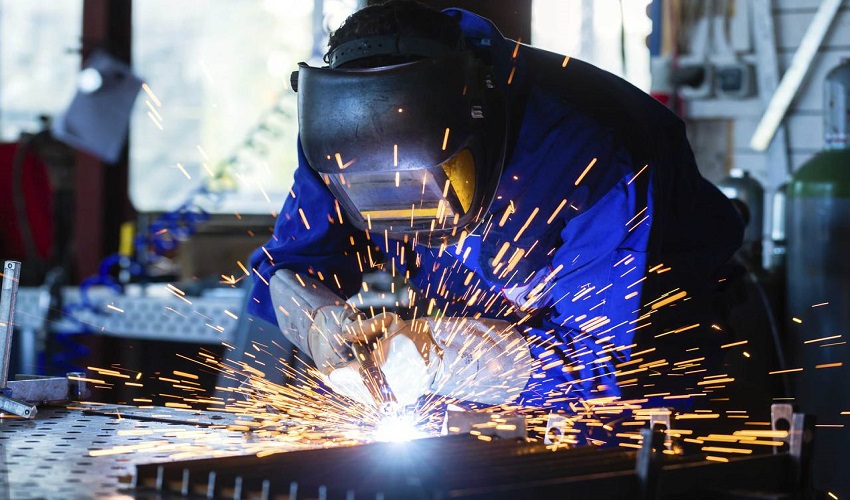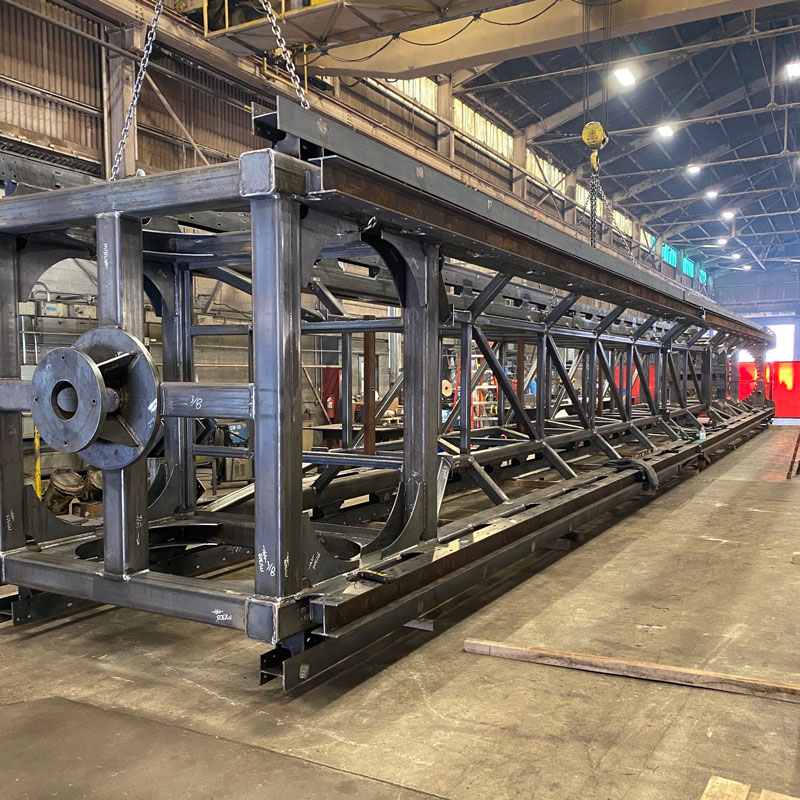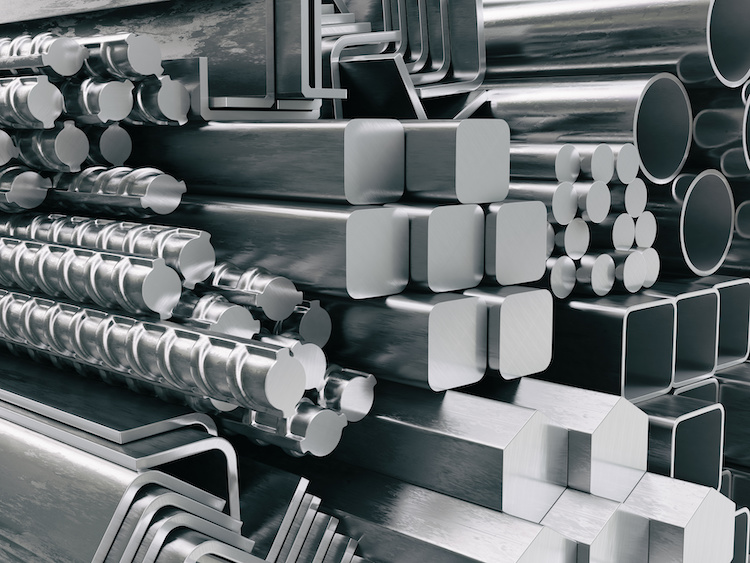Specialist Steel Fabricators Melbourne: High Quality You Can Trust
Specialist Steel Fabricators Melbourne: High Quality You Can Trust
Blog Article
Cutting-edge Fads in Steel Fabrication: Enhancing Toughness and Precision
In the world of steel construction, the pursuit of resilience and accuracy has actually brought about a wave of cutting-edge fads that are reshaping the sector. From improvements in welding technologies to the assimilation of robot automation in construction processes, the landscape of steel production is advancing swiftly. High-strength alloy advancement, coupled with the application of 3D modeling and simulation software application, is pushing the borders of what is attainable in regards to architectural honesty and precision. The growing focus on lasting methods in steel production is not only driving efficiency but additionally cultivating a much more eco mindful approach to fabrication. These trends are not simply forming the existing however likewise laying the foundation for the future of steel manufacture, promising more improvements in resilience and precision.
Advanced Welding Technologies
In the realm of steel manufacture, the fostering of innovative welding technologies has considerably revolutionized the market's method to attaining premium top quality and accuracy in structural welds. Advanced welding innovations, such as laser beam of light welding and friction mix welding, have actually become game-changers in the field. Laser beam welding utilizes a focused laser beam to join steel elements with exceptional precision and rate, making it optimal for thin materials and detailed designs. On the other hand, rubbing stir welding develops incredibly solid bonds by mechanically intermixing the particles of the materials at the joint, removing the requirement for thawing the metal. These technologies supply many advantages, consisting of minimized heat-affected zones, minimal distortion, and boosted mechanical properties in the bonded joints. By leveraging these innovative welding techniques, steel producers can boost the resilience, stamina, and accuracy of their architectural welds, fulfilling the increasingly requiring demands of modern-day building projects.
Robot Automation in Construction
Embracing robot automation has become a cornerstone of modern steel fabrication methods, improving and streamlining processes effectiveness across the market. Robots are changing the way steel components are made, offering exceptional accuracy and speed while lowering human error. These automated systems can manage repeated tasks with regular precision, resulting in higher quality output.
One key benefit of robotic automation in steel fabrication is the ability to function all the time without fatigue, significantly raising production result. This constant operation reduces downtime and speeds up task timelines, inevitably conserving costs for producers. Furthermore, robots can be set to do complex jobs that may be harmful or difficult for human workers, enhancing security in the work environment.
Additionally, robot automation allows seamless assimilation with other electronic innovations, such as computer-aided layout (CAD) software program and Web of Points (IoT) systems (steel fabrication melbourne). This interconnected method improves communication in between various phases of manufacture, optimizing workflows and ensuring real-time surveillance and control. As the steel manufacture sector continues to evolve, robot automation stands out as a transformative force driving effectiveness and accuracy in producing processes

High-Strength Alloy Development
The development of high-strength alloy advancement in steel construction is improving the industry's method to enhancing product longevity and efficiency. High-strength alloys are engineered to display remarkable mechanical residential properties, such as raised tensile stamina, toughness, and deterioration resistance compared to conventional steel qualities. By incorporating these advanced alloys into construction procedures, suppliers can produce elements that endure higher tension levels and severe environments, resulting in more reputable and durable end items.
One key advantage of high-strength alloy development is the capability to minimize material thickness without endangering architectural stability. This not just leads to lighter-weight elements however additionally adds to cost financial savings and boosted performance in manufacture and setting up procedures. In addition, the enhanced strength-to-weight ratio of these alloys enables the layout and building of frameworks with higher load-bearing capacities while decreasing general weight.
3D Modeling and Simulation Software Program
Developments in steel manufacture processes have been significantly pushed by the integration of advanced 3D modeling and simulation software application tools. These devices enable fabricators to produce detailed online designs of their projects, allowing them to visualize the last item with accuracy prior to any physical work starts. By replicating different anxiety aspects, ecological conditions, and architectural tons, producers can maximize styles for improved durability and efficiency. Additionally, 3D modeling and simulation software application improve the production process by determining possible problems at an early stage, reducing the requirement for pricey rework and reducing material waste.

Lasting Practices in Steel Production
Including lasting practices into steel production processes is necessary for lessening ecological influence and ensuring lasting source availability. One essential lasting technique is the fostering of energy-efficient modern technologies to decrease greenhouse gas discharges throughout the steel manufacturing procedure. This includes using renewable power resources, such as solar or wind power, to power steel plants and executing energy-efficient devices to maximize power use.
Another important facet of sustainable steel manufacturing is the responsible sourcing of resources. This involves making sure that the iron ore and various other sources made use of in steelmaking are acquired from environmentally friendly and moral sources. By promoting transparency in the supply chain and sticking to rigorous environmental next criteria, steel makers can decrease click here for info the adverse effects of resource removal on regional communities and communities.

Verdict
To conclude, the innovative fads in steel manufacture such as sophisticated welding technologies, robotic automation, high-strength alloy growth, 3D modeling and simulation software program, and lasting practices are boosting the sturdiness and precision of steel products. These developments are transforming the steel construction industry by enhancing top quality, efficiency, and sustainability. It is clear that the future of steel fabrication lies in welcoming these sophisticated modern technologies to meet the needs of modern construction and manufacturing sectors.
In the realm of steel manufacture, the quest of longevity and precision has led to a wave of innovative fads that are reshaping the sector.In the world of steel manufacture, the adoption of advanced welding innovations has actually considerably reinvented the industry's approach to accomplishing exceptional quality and navigate here precision in structural welds. As the steel fabrication industry continues to develop, robot automation stands out as a transformative force driving effectiveness and accuracy in manufacturing processes.
Moreover, reusing and recycling steel scrap and waste products play a significant role in boosting the sustainability of steel manufacturing. steel fixing.In verdict, the cutting-edge fads in steel fabrication such as innovative welding technologies, robot automation, high-strength alloy growth, 3D modeling and simulation software application, and sustainable practices are boosting the toughness and precision of steel items
Report this page